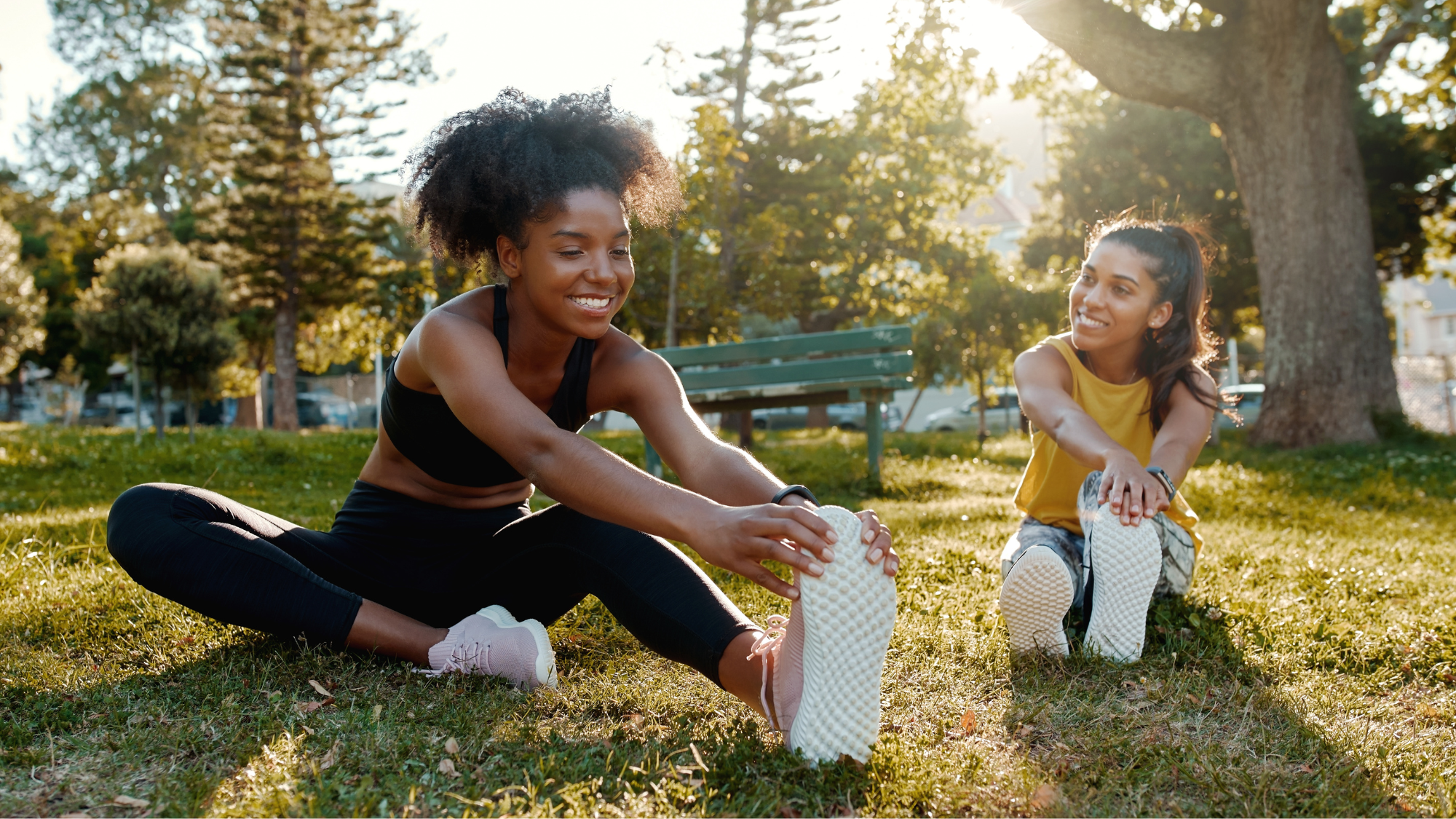On the hunt for the best warm up exercises? 10 to add to your next workout
In the gym and need some inspiration or want to switch up your routine? The best warm up exercises are in...


In the gym and need some inspiration or want to switch up your routine? The best warm up exercises are in...
On the hunt for the best warm ups exercises? News flash: you're in the right place. While half heartedly stretching or school PE lessons might spring to mind, there are actually a whole host of fun, dynamic ways to warm up your muscles that, whether you're a pro athlete or a workout newbie, is key for a whole host of reasons, from preventing injury to boosting performance.
Picture the scene, then: you've got your best gym leggings on and are ready to smash through one of your favourite gym workouts. But now your mind has gone absolutely blank about which warm up exercises to start with.
That's where this article comes in. We've asked the experts for their take about which warm up exercises trump all, plus whether they're actually as important as everyone believes - and you might be surprised. Keep scrolling for advice from personal trainer Alin Ursache and Jen Buddington, personal trainer and Level 3 Hatha Yoga Teacher, both who work at PureGym.
Warm up exercises: your complete guide
What is a warm up exercise and how long should they take?
Taking it back to basics, we'll start with a definition. Warm up exercises are simply a range of movements you do before a workout to prepare your body for exercise. The best part? They really only need to last five to ten minutes for you to reap the benefits.
You can make a warm up routine your own - that is, you can pick and choose which moves you prefer from those suggested at the bottom of this page (there is no one-stretch-fits-all). As Ursache says, "the best warm up exercise is the one you enjoy doing, because you are more likely to stick with it over another that you don’t enjoy".
He goes on to explain: "As long there is a form of stretching in your routine targeting the muscles you will exercise, paired with a heart raiser activity, you've got yourself a solid warm-up."
Are warm ups important?
Short answer: yes. "Warming-up is essential in reaching optimum performance," Ursache reveals. He also shares that they are super useful when it comes to preventing injury, as above, that stop you from working out.
Research from 2007 backs this up, as it suggests that involving a "warm up and stretching has the most positive outcome in preventing injuries." So other than injury prevention - where else are they important?
Well, including mobility exercises in a warm up is great as it helps "lubricate the joints, while a low-intensity aerobic activity will increase the heart rate," Ursache goes on to add.
Buddington tells us warming up is important as it is beneficial in "increasing blood flow, ensuring your muscles are supplied with oxygen and slowly increasing your heart rate which minimises stress on your heart."
"Beside preparing your body for aerobic or anaerobic activities, a warm-up will also help you get focused, this being an essential part to get the most out of a training session," says Ursache.
In case you needed another reason to add to the list, a 2015 review found that "a dynamic warm up could boost power, strength and overall performance."
Count us in.
What happens if I don't warm up?
Good question. While both PT experts have stressed the importance of warming up, we wanted to know: are they essential, and what happens if you skip a warm up?
Buddington reveals that skipping a warm up can increase stress on the cardiovascular system. A recent study found that of those who didn't warm up before exercising on a treadmill, 70% had abnormal ECG readings. "This is due to inadequate oxygen supplied to the heart — essentially, their hearts weren’t ready to perform at the high rates required for the intense exercises."
If they'd warmed up, they'd have prepared their body for the intense workout. So, does what type of warm up exercises you do matter, and should they differ depending on your workout of choice? Another yes (we'll explain the different warm up types, below). As Buddington explains "Static stretches have actually been proven to negatively impact performance and reduce muscle strength."
However, she adds that it's not all bad - static stretches do improve flexibility, so they're not worth swerving altogether. A 2018 study found that stretching improves blood flow, and that "this improved circulation helps muscle recovery." Sounds good to us.
What is the difference between dynamic and static warm up exercises?
A traditional approach to warming up is, of course, stretching, aka a static warm up. This literally means you are standing still while stretching.
Dynamic stretching is a more modern approach to warming up that takes the form of dynamic stretching - an active, movement-focused warm up that might not sound exciting but definitely is.
Need more explanation of the difference between the old and new? Put simply, "dynamic stretches are “controlled movements” targeting specific muscle groups, ligaments and soft tissue safely before the demands of the exercise or activity." Buddington explains.
Whereas, static stretches are “held in a single position for a period of time usually between 15 to 45 seconds" Ursarche tells us, think calf stretch or a cat cow stretch.
Including static stretches is a great way to increase range of motion, as it involves "moving a joint as far as it can go and holding it in that post for a certain amount of time." Remember, not for too long though.
But Ursache warns against holding static stretches extensively. Recommending holding stretches for anywhere between 10 to 90 seconds, because, as mentioned above, longer durations have been indicated to be counterproductive within warm-ups.
Now you've learnt more about the pros and cons of working out, here are some example videos to help you give it a go from home or the gym.
10 best warm ups to do pre-workout
Our two experts share their top ten warm up exercises to chose from ahead of your next work out, plus Ursarche explains why they're good warm up exercises.
1. Arm circles
"This exercise helps improving mobility and flexibility in the shoulders helping the shoulder muscles and joints prepare for physical activity."
2. Downward dog to runner’s lunge
"This exercise stretches and strengthens the muscles of the legs, hips, hamstrings, quadriceps, and back but also involves the upper body, helping you to mobilize the wrist and the shoulder." The video below has a few others to try in there too.
3. Forward leg swing
A great warm up exercise for warming up and stretching the hip joint and muscles. It's also good for your hamstrings. Start slowly and work your way up to a full range of motion.
4. Cat cow stretch
Increase your overall mobility with this stretch. Breathe in and out as you gently warm up your spine to prevent back pain and release tension before you start your workout.
5. Cross trainer
"The Cross Trainer is an efficient way to warm up. The movement passes through all major joints, and this will mobilize all joints within a single exercise. The intensity should be easy to moderate, and the key is to engage both hands and legs, rather than pushing with your legs and barely holding the handles. A good practice is to alternate pushing with pulling to fully engage your upper body."
6. Jumping jacks
"An excellent way to mobilize your legs and shoulders and prepare for exercise, but they can also be a very efficient heart raiser." If you have any knee issues, this is not recommended.
7. Hamstring Mobility + Thoracic Rotation
"This exercise allows you to fully engage the legs and core. Thoracic rotation can help to open up the chest, improving breathing and reducing tightness and pain in surrounding joints.
Can be perfect to do before squats as it helps with depth but also mobilizes the upper body. In case of barbell squats, a full body warm up can make a huge difference in your performance as your core and arms will stabilize the barbel on your shoulders."
8. Squat floor touch
"The squat will fully mobilize your leg and help preparing you for your leg session. Touching the floor is a way to check if you went deep enough while squatting."
9. Overhead stretch
"The overhead stretch work on your upper body helping with releasing stiff shoulders, but it also targets the chest, forearms or triceps at a smaller degree."
Start by interlacing your fingers above your head. Then, turn your palms upward as you push your arms back and up. Hold for 5-10 seconds, then relax and repeat. Simples.
10. March on the spot
"This exercise is good for mobility, endurance, and coordination. It also helps you improve your balance while being an efficient heart raiser."
Happy warming up - next stop? Time to smash your gym workout of choice.
Celebrity news, beauty, fashion advice, and fascinating features, delivered straight to your inbox!

Dionne Brighton is the Social Media Editor at Marie Claire UK. After writing about everything from nail trends to celebrity style moments for Marie Claire UK, Glamour UK and Woman & Home, she now leads the brand’s social strategy. Her work transforming Marie Claire UK’s social platforms earned her a BSME Talent Award nomination.